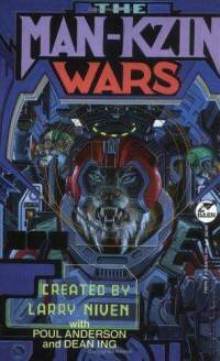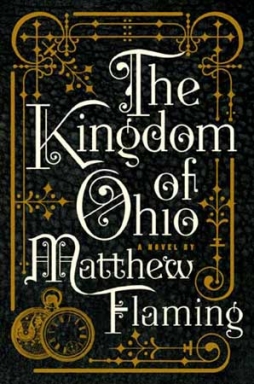 How to describe Matthew Flaming’s book The Kingdom of Ohio?
How to describe Matthew Flaming’s book The Kingdom of Ohio?
Well, at least it’s a good story. (Of course I’d have to say that, wouldn’t I? But really: it is.) It’s a story about conspiracies and struggles to reshape the world; about secret wars between men like J.P. Morgan, Thomas Edison, and Nikola Tesla. It is about one of the strangest and least-known mysteries of American history: the existence and disappearance of the Lost Kingdom of Ohio. It is about science and faith, and the distance between the two. Most of all, it’s a story about a man and a woman, and about love.
That’s from an early page of the novel. To this description one might also add: It’s about time, and memory, and the distance between those things as well. It’s about machines, and trains, and the secrets beneath our feet. It’s about the different worlds we live in without noticing. And it is about the way in which these worlds touch.
In terms of plot, the novel follows two strands; one a framing narrative of an old antiques dealer in contemporary Los Angeles, and the other the meat of the book, the story of a young man named Peter Force who was a miner in Idaho in 1899, comes to New York following the death of his father, finds work building the new subway system, and then meets a strange young woman who claims to have travelled in time. We learn that the woman, Cheri-Anne Toledo, is the only daughter of the last King of Ohio, and has collaborated with Nikola Tesla; but Tesla himself seems not to remember her.
Published in 2009, The Kingdom of Ohio is a stunningly assured book, outstanding in its skillful prose and consistent intelligence. The style of the book is powerful, evocative; it builds dreamlike worlds both in Ohio and New York, making a kind of fairy-tale of America, where inventors replace wizards and businessmen stand in for kings (sometimes). Its language is rich and perfect, reflecting a richness of conception — a richness in the way it imagines its setting, in the way it imagines its characters.
…
Read More Read More
 Two of my favorite card games come from Looney Labs: Fluxx and Chrononauts. One of the major selling points of these games, for me, is that they’re creative games that have victory conditions that can change on a dime. You can be close to winning and then, with a lucky and well-played turn by an opponent, you can find yourself on the losing end.
Two of my favorite card games come from Looney Labs: Fluxx and Chrononauts. One of the major selling points of these games, for me, is that they’re creative games that have victory conditions that can change on a dime. You can be close to winning and then, with a lucky and well-played turn by an opponent, you can find yourself on the losing end. How to describe Matthew Flaming’s book The Kingdom of Ohio?
How to describe Matthew Flaming’s book The Kingdom of Ohio?  Apex Magazine is a monthly on-line publication of science fiction, fantasy and horror edited by Catherynne M. Valente.
Apex Magazine is a monthly on-line publication of science fiction, fantasy and horror edited by Catherynne M. Valente.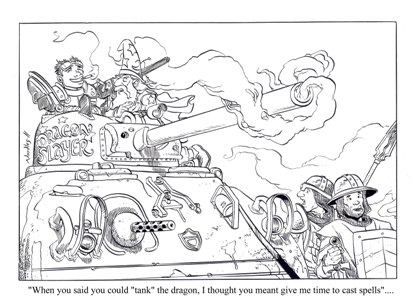
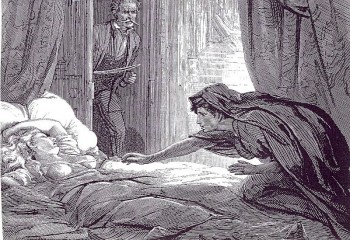 It’s always best to begin at the start, to quote no one in particular. We’ll start with the introductions: my name is Josh Reynolds and I wanted to be a detective when I grew up…no, not just a detective.
It’s always best to begin at the start, to quote no one in particular. We’ll start with the introductions: my name is Josh Reynolds and I wanted to be a detective when I grew up…no, not just a detective.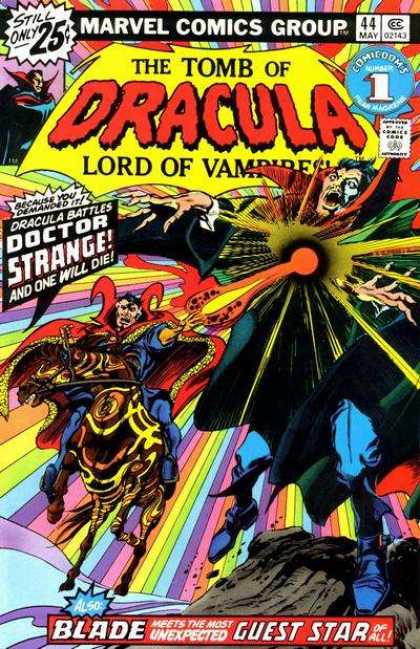
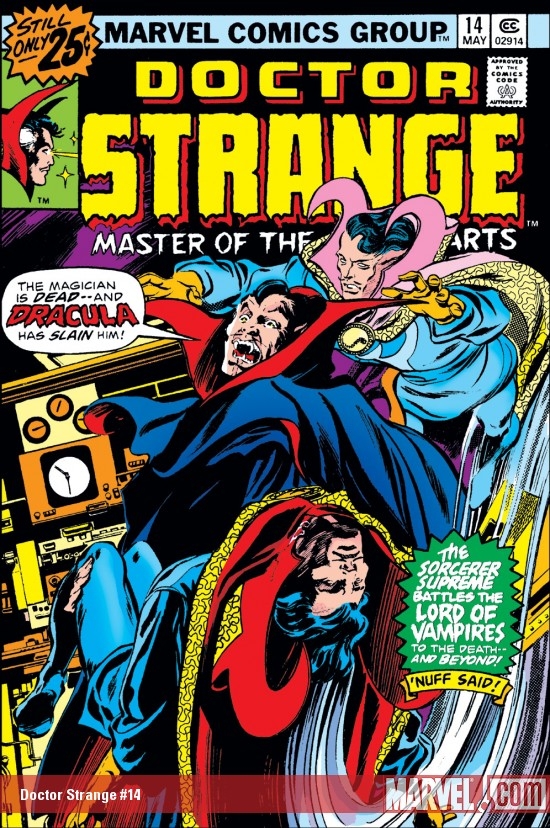 From there, we move to the much more interesting subplot involving the white-haired vampire who is being sought by both Blade and Hannibal King. The actual conflict between Dracula and Dr. Strange comes off rather well with the sorcerer tracking the vampire to his coffin and entering an astral battle with the vampire in 15th Century Wallachia. Unsurprisingly, Strange underestimates the vampire’s hypnotic powers and is attacked and bitten by Dracula. The issue’s real climax sees Blade and Hannibal King meeting for the first time on the trail of the white-haired vampire who ruined both of their lives.
From there, we move to the much more interesting subplot involving the white-haired vampire who is being sought by both Blade and Hannibal King. The actual conflict between Dracula and Dr. Strange comes off rather well with the sorcerer tracking the vampire to his coffin and entering an astral battle with the vampire in 15th Century Wallachia. Unsurprisingly, Strange underestimates the vampire’s hypnotic powers and is attacked and bitten by Dracula. The issue’s real climax sees Blade and Hannibal King meeting for the first time on the trail of the white-haired vampire who ruined both of their lives.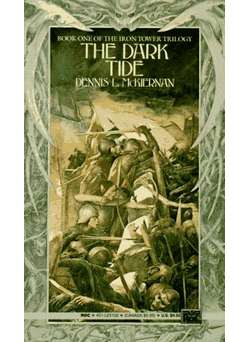 The publication of Terry Brooks’ Sword of Shannara in 1977 was a watershed moment in fantasy literature. The success of J.R.R. Tolkien’s The Lord of the Rings left fans clamoring for more epic, secondary world fantasy
The publication of Terry Brooks’ Sword of Shannara in 1977 was a watershed moment in fantasy literature. The success of J.R.R. Tolkien’s The Lord of the Rings left fans clamoring for more epic, secondary world fantasy 

